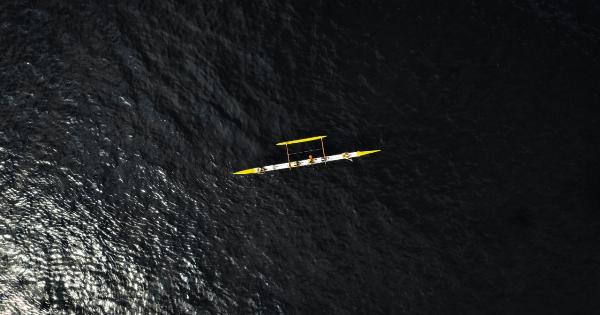Scientific research often involves collaboration among teams of researchers who work together to achieve a common goal.
While larger research teams may have more resources and manpower, there are many examples of small teams that have achieved remarkable results. In this article, we will explore some of the best-performing tiny scientific teams and their contributions to the scientific community.
The Benefits of Small Scientific Teams
While larger scientific teams may have a greater number of researchers and resources at their disposal, there are several advantages to small scientific teams:.
1. Increased collaboration: With fewer team members, communication and collaboration are often more efficient. There is a greater sense of camaraderie and a shared vision among team members.
2. Creative problem-solving: Smaller teams often encourage innovative and out-of-the-box thinking. Each team member has a greater opportunity to contribute their unique ideas and perspectives.
3. Flexibility and adaptability: Small teams can quickly adapt to changes and challenges in their research. They can easily modify their strategies and pivot if necessary.
4. Streamlined decision-making: With fewer team members, the decision-making process becomes more agile and efficient. There is less bureaucracy and red tape to navigate.
Examples of Best-Performing Tiny Scientific Teams
1. The Hubble Space Telescope Team
The team behind the Hubble Space Telescope is a prime example of a small scientific team that has made significant contributions to astronomy and our understanding of the universe.
Despite their size, this team has been responsible for groundbreaking discoveries and stunning images of distant galaxies.
2. The CRISPR-Cas9 Gene Editing Team
CRISPR-Cas9 is a revolutionary gene-editing technique that has the potential to transform medicine and biology.
The team of scientists who developed this technique, led by Jennifer Doudna and Emmanuelle Charpentier, consisted of a small group of researchers who collaborated to harness the power of CRISPR.
3. The LIGO Scientific Collaboration
The Laser Interferometer Gravitational-Wave Observatory (LIGO) team is a small group of scientists and engineers who made the groundbreaking discovery of gravitational waves in 2015.
This discovery confirmed a major prediction of Albert Einstein’s theory of general relativity and opened up a new field of astrophysics.
4. The Indigo V Team
The Indigo V team, led by physicist Subir Sachdev, is a small research group focused on the study of quantum materials and superconductivity.
Despite their small size, this team has made significant contributions to our understanding of complex electronic systems and quantum matter.
5. The Event Horizon Telescope Team
The Event Horizon Telescope (EHT) team is an international collaboration of astronomers and researchers who captured the first-ever image of a black hole in 2019.
This team, consisting of a relatively small group of scientists, used a network of telescopes around the world to create an Earth-sized virtual telescope.
6. The Kepler Team
The Kepler team, led by William Borucki, was responsible for the Kepler space telescope mission, which discovered thousands of exoplanets orbiting distant stars.
This small team of scientists and engineers revolutionized the field of exoplanet research and significantly expanded our knowledge of the universe.
7. The IceCube Neutrino Observatory Team
The IceCube Neutrino Observatory team is a collaboration of scientists and engineers who built and operate a large neutrino detector buried deep in the ice at the South Pole.
This small team made the groundbreaking discovery of high-energy neutrinos originating from outside our galaxy, providing valuable insights into the universe’s most energetic phenomena.
8. The Human Genome Project Team
The Human Genome Project was an international scientific research effort aimed at mapping and sequencing the entire human genome.
This monumental undertaking was accomplished by a relatively small team of scientists and researchers who collaborated across multiple institutions and countries.
9. The LISA Pathfinder Team
The LISA Pathfinder mission was a space probe designed to test the technology needed for the future space-based gravitational wave detector, the Laser Interferometer Space Antenna (LISA).
The small team behind the LISA Pathfinder mission successfully demonstrated the feasibility of the LISA concept and paved the way for future gravitational wave observations.
10. The Small Synoptic Survey Telescope (LSST) Team
The LSST team is responsible for the design, construction, and operation of the Large Synoptic Survey Telescope, a state-of-the-art telescope that will conduct a comprehensive astronomical survey of the entire visible sky.
This small team of scientists and engineers aims to revolutionize our understanding of the universe by capturing detailed images and collecting data on billions of celestial objects.
Conclusion
While large scientific teams may have certain advantages, small scientific teams have proven time and again that they can achieve remarkable results.
The examples discussed in this article demonstrate the power of collaboration, innovation, and dedication within small teams. These best-performing tiny scientific teams have made significant contributions to their respective fields and have expanded our understanding of the universe.






























